Kristian Fredrikson, Designer by Michelle Potter
Melbourne Books. AUD 59.95
reviewed by Jennifer Shennan
This book is treasure and joy. It covers the lifelong career of Wellington-born Kristian Fredrikson, designer for ballet, theatre, opera, film and television in both New Zealand and Australia. The volume is itself an achievement of fine design—superbly presented and generously illustrated, though selective in the careful interpolation of images, both drawings and performance photographs, into the text. It is an appreciative profile by an author who clearly loves the work of her subject but, resisting hagiography, has produced perceptive analysis and an enduring record of his lifetime’s work in a notoriously ephemeral performing art. Both she and the publisher are to be congratulated.
Extensive research (Potter first conducted an oral history with Fredrikson in 1993) has allowed coverage of his prolific body of work. There are frequent quotations from his own unpublished writings about ideas and work processes, which I found illuminating. The appendices provide extensive documentation, leaving the text refreshingly accessible.
There are stimulating insights and analyses of both the aesthetic and historical influences in Fredrikson’s work (Klimt is there, Rothko is there, mediaeval Sicily, 19th century New Zealand, war-time Vietnam, outback and small-town Australia are there). Potter’s invaluable commentaries will help audiences follow, in retrospect, ‘new narratives from old texts’ in the innovative reworkings of classics such as Harry Haythorne’s Swan Lake (1985) for Royal New Zealand Ballet, Graeme Murphy’s Nutcracker. The Story of Clara (1992) and his Swan Lake (2002) both for The Australian Ballet.
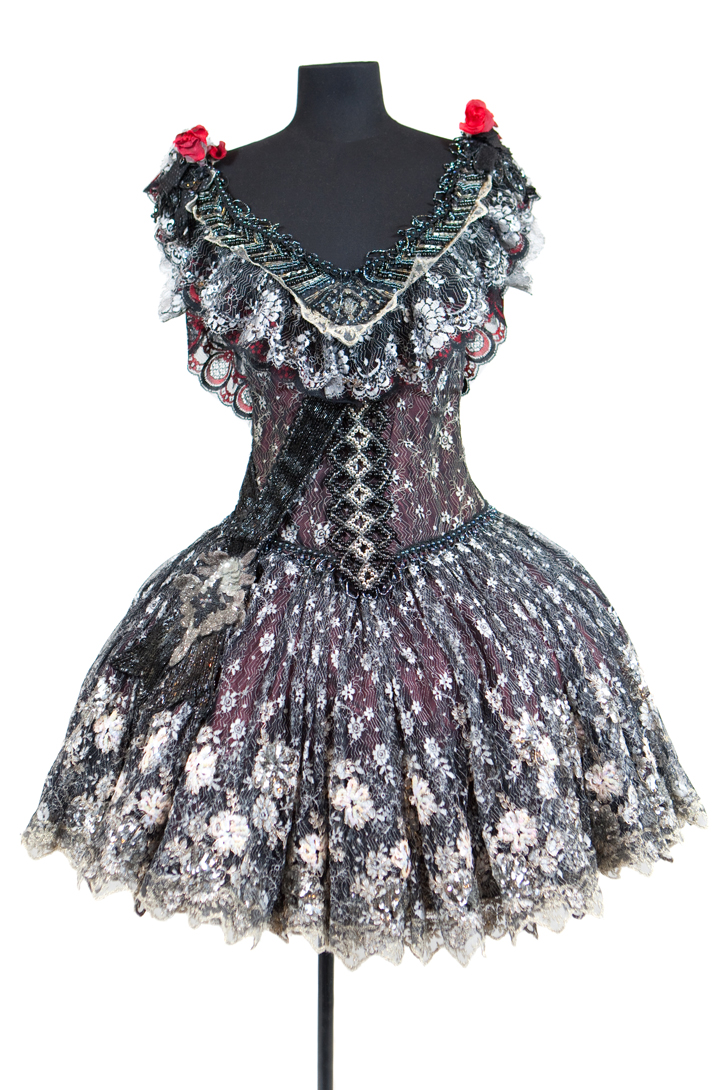
Long-time ballet followers in New Zealand would say they knew Fredrikson’s work well, keeping memories for decades of his sumptuous Swan Lakes, the ingenious A Servant of Two Masters, a poignant Orpheus, a searing Firebird, an enigmatic Jean [Batten], a spirited Peter Pan, atmospheric A Christmas Carol, and hilarious The Nutcracker. The book also includes his prolific output across other genres of theatre away from ballet. It is fascinating to learn of Fredrikson’s sensitive and restrained approaches to plays and films such as Hedda Gabler, with Cate Blanchett, or those with Australian Aboriginal, Vietnamese or American Indian settings … ‘away from dancers who spend their time twirling around on their toes’. We thus see a different side to the designer who always prioritised the contribution he could make to a collaborative project, rather than use it as an opportunity to primarily display his own aesthetic.
Interviews with his ballet colleagues, especially Gray Veredon and Graeme Murphy, contribute to the portrayal of a deeply intelligent, thoughtful, private man with uncompromising respect for those trusted choreographers and directors with whom he worked most closely. The standout choreographic collaborations would have been with Murphy, Veredon and Russell Kerr, and they are quoted as appreciating the close integration of design and choreographic ideas, with a sense of movement always portrayed in the designs. Fredrikson did not dress mannequins, he dressed movers.
Dancers, too, appreciated this empathy, even when his costumes of period or character required particular weights, silhouettes and textiles. There are descriptions of his attending dance rehearsals to photograph sequences so as to be sure whatever fantasy he had in mind would also prove practical. Compromises and re-workings were sometimes required.
Increasingly, today’s ballet practitioners seem less and less interested in the source and history of their art. It is heartening to learn how Fredrikson’s starting point for his concepts grew out of impeccable historical research. Since my own work and interests lie in Renaissance and Baroque dance and related arts, I was pleased to copy out a passage from his own words, about transforming, or inventing a historical period:
The problem is most of us don’t know true period. We look at a Watteau painting and we say, ‘Oh that’s how they dressed in Watteau’s time.’ Well they didn’t. Watteau made up his own people. We look at Rembrandt and say, ‘That’s how they dressed in Rembrandt’s day.’ They did not. Rembrandt created costumes for them… Our understanding of the past is so unreal that even if I do the real history, it’s surreal. And I suppose that’s what I do. I go towards the real history and that seems extraordinary.
I am now very happy to have this quote as a fridge magnet in my kitchen. It seems to echo the equally interesting and challenging practice of a writer using historical or autobiographical fiction as an imaginative way of telling a ‘true’ story.
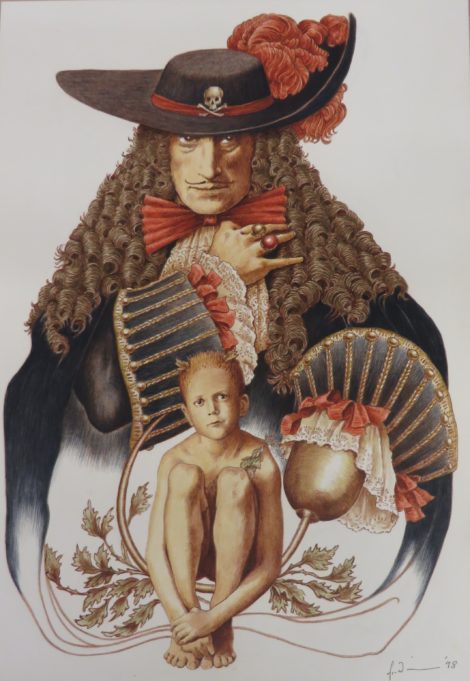
Chapter 6, New Zealand Impressions, has a fabulous full-page image of Captain Hook in Russell Kerr’s Peter Pan. Jon Trimmer is portrayed as the seductively beautiful pirate, Peter Pan squatting at his feet is Everyboy—with a somewhat perplexed expression on his face, wondering why anyone would want to leave childhood and become an adult. The study for the Angel of Death in Murphy’s Orpheus is chillingly beautiful. The priceless comic play of Harry Haythorne as Dr Lombardi and Jon Trimmer as Pantalone in Veredon’s A Servant of Two Masters is evidence of one of the best productions RNZB ever staged.
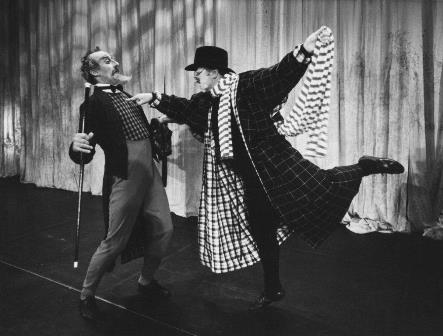
But it is the two quietly dramatic photographs from Veredon’s Tell me a Tale that could slow your breathing. The choreography tells a particular story, though it could have been the story of many a family. The cast are early European settlers arriving in New Zealand, meeting and interacting with Maori people. The young pakeha boy befriending a Maori girl brings forth a furious haka from her brother—performed by the much admired (and then much missed ) Warren Douglas. This was the most convincing representation of haka on a ballet stage I have seen in six decades of watching a range of attempts. What a sorry business that Tale was never restaged by RNZB, and it’s a safe if sad bet it is never likely to be—even though the original cast are around and could still be involved, and indeed the choreographer, one of New Zealand’s finest dance-makers, is still actively staging his works in Europe. I treasure these fine photographs of a talisman work from RNZB ‘s early repertoire, gone but not forgotten. It belongs here in New Zealand, exists nowhere else, and should be neither gone nor forgotten.
The eighth and final chapter ‘The Ultimate Ballet: Swan Lake’ is an insightful comparison of approaches taken to this classic work, tracing the five different productions Fredrikson worked on. There are both similar and contrasting elements within those stagings—revealing the nature of von Rothbart’s evil, learning that Odette’s mother’s tears created the lake that her daughter will drown in, and the possibility of lovers separated by death though reuniting in an afterlife. The themes of love, treachery and loyalty are the same as those we live by, so even quite different settings in any production of calibre are as close to home as we choose to invite them.
You could call this an illustrated biography of the life’s work of a totally committed theatre designer. His life was his work, and the book emulates the man. There is no gossip, no bodice-ripping tell-all of a private life, no imposed psychoanalysis, and Alleluia to that I say. If you want to know who Kristian Fredrikson was and what was important to him, read his work. Read this book.
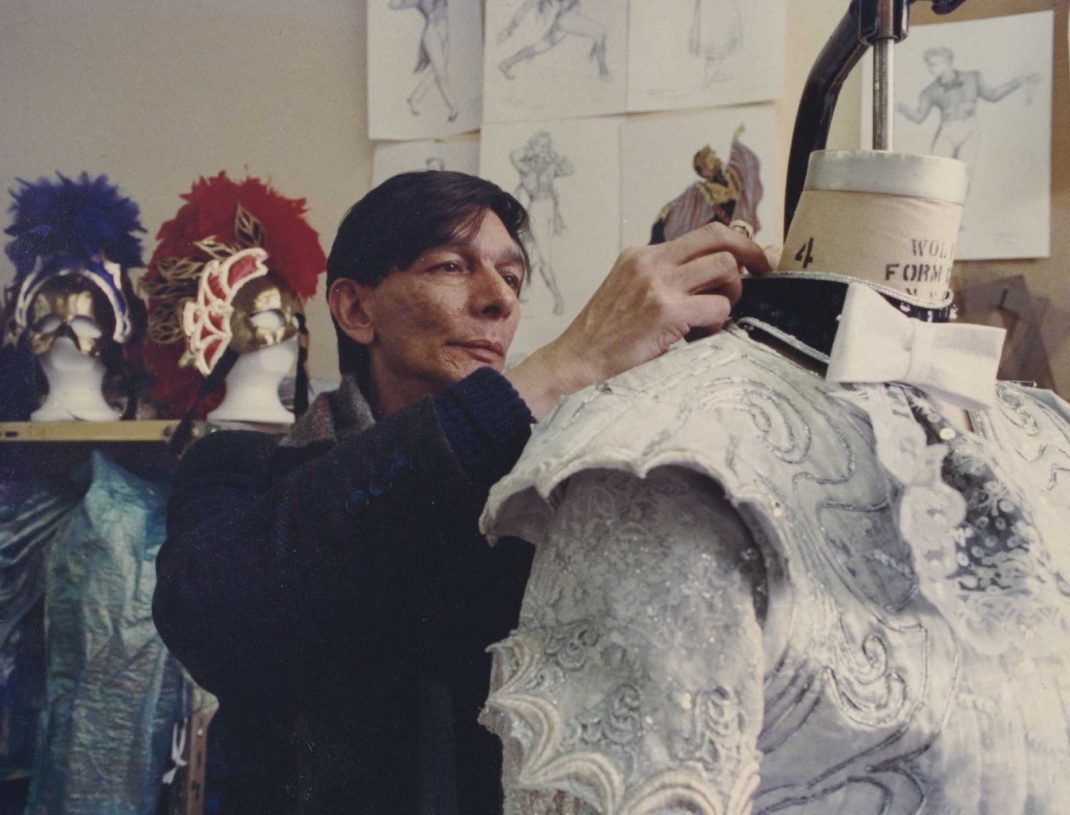
Jennifer Shennan, 18 August 2020
Featured image: Stephen McTaggart and Kerry-Anne Gilberd in a scene from Gray Veredon’s Tell Me a Tale (detail). Royal New Zealand Ballet, 1988. Photographer not identified. Collection of Gray Veredon
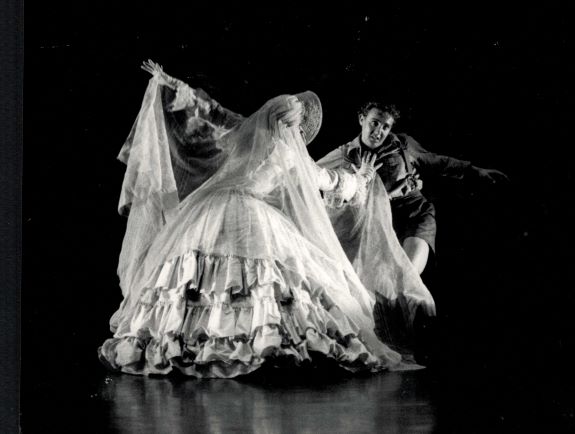
One thought on “Kristian Fredrikson. Designer. Book review”